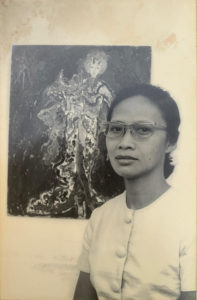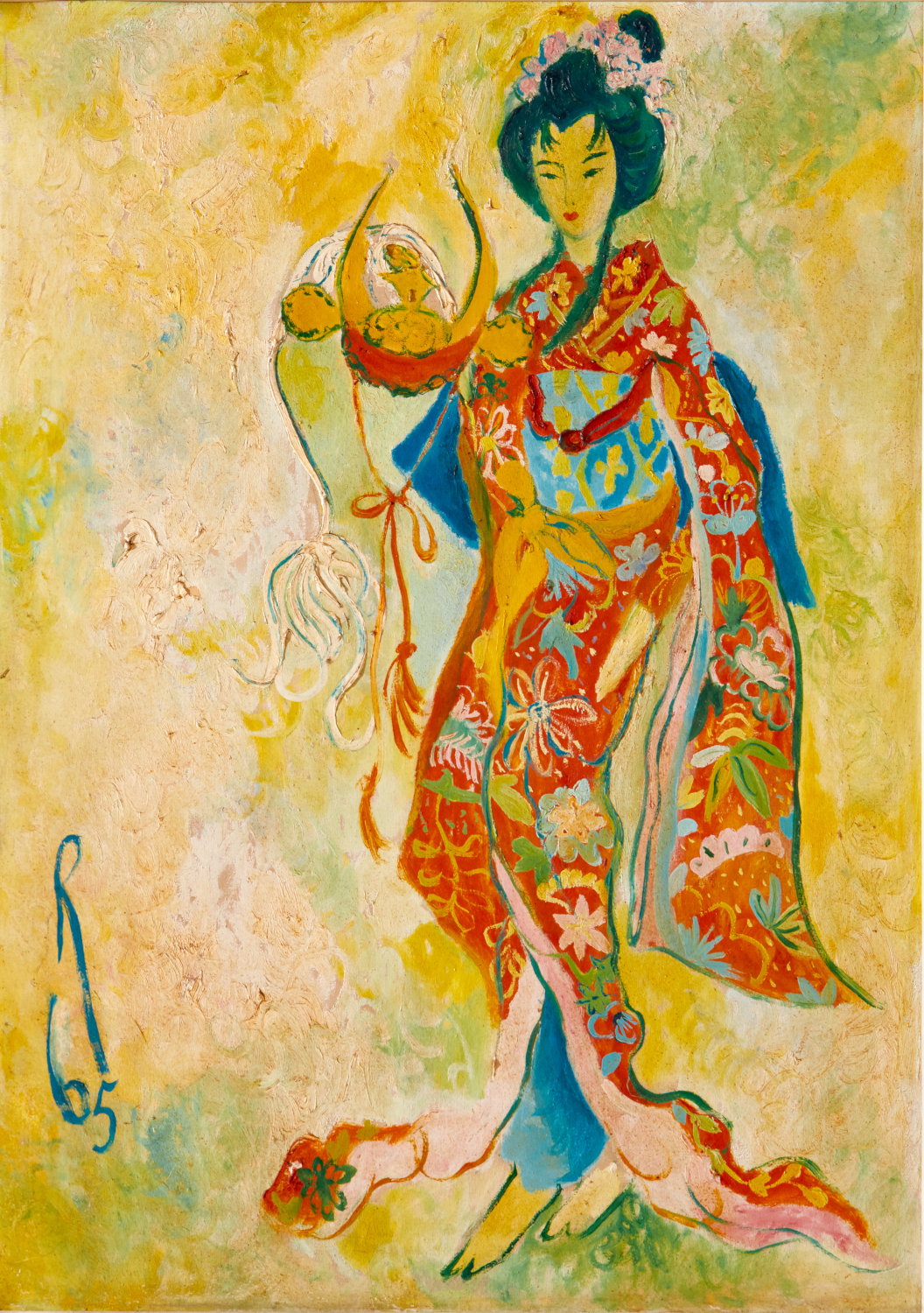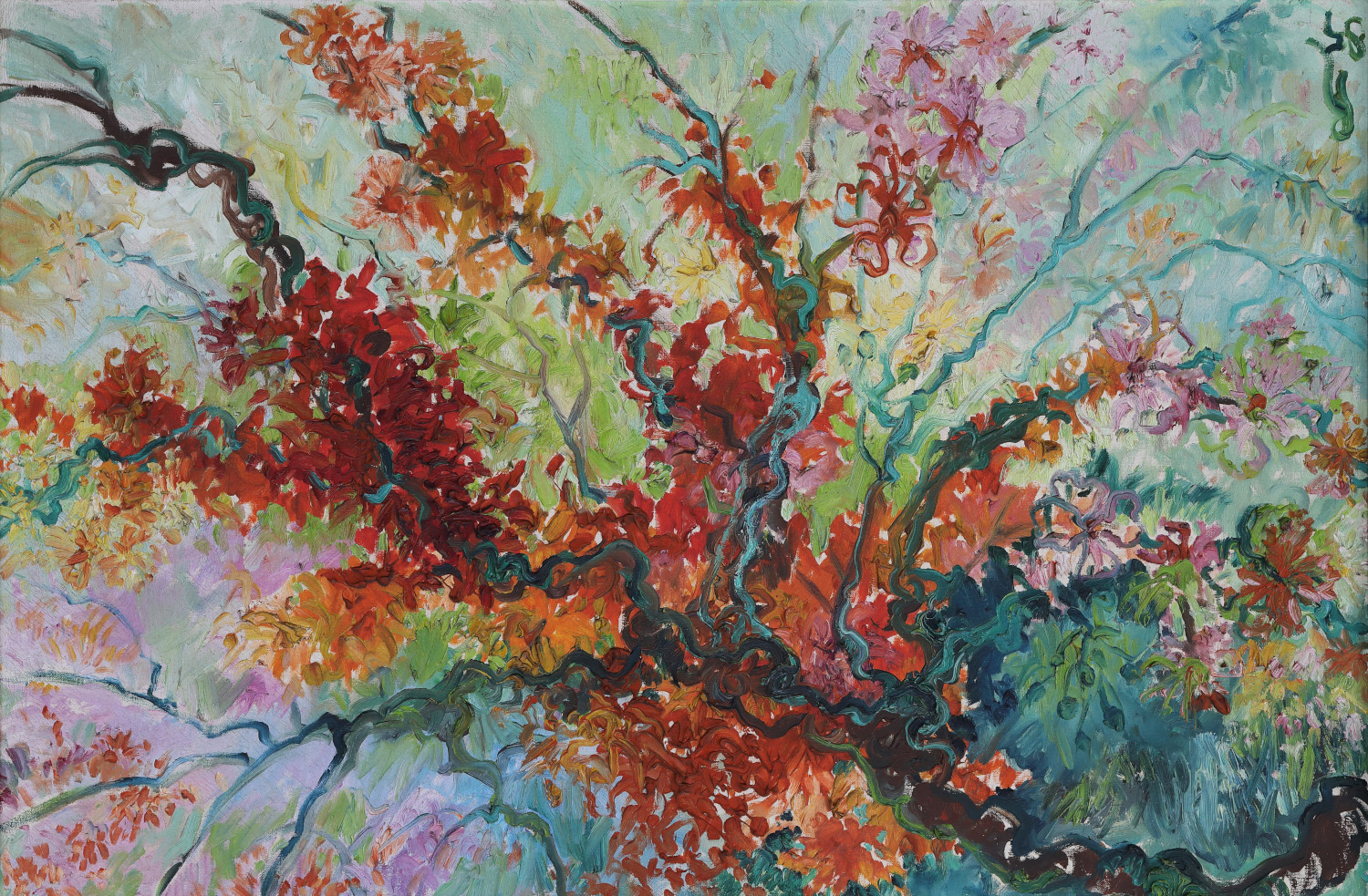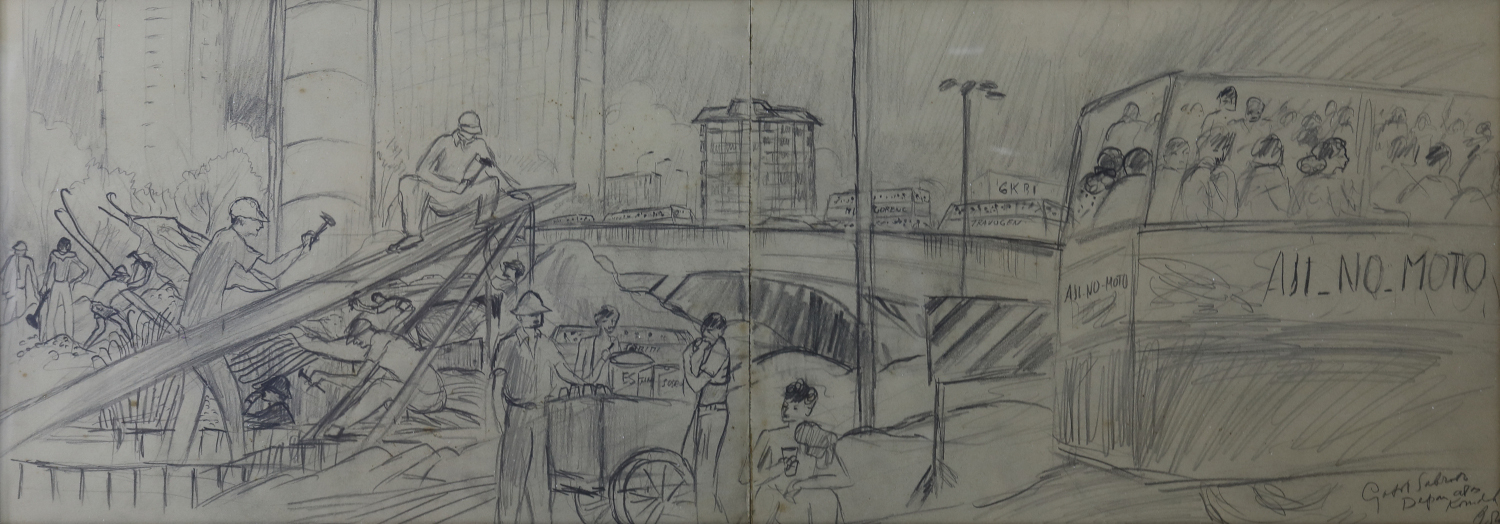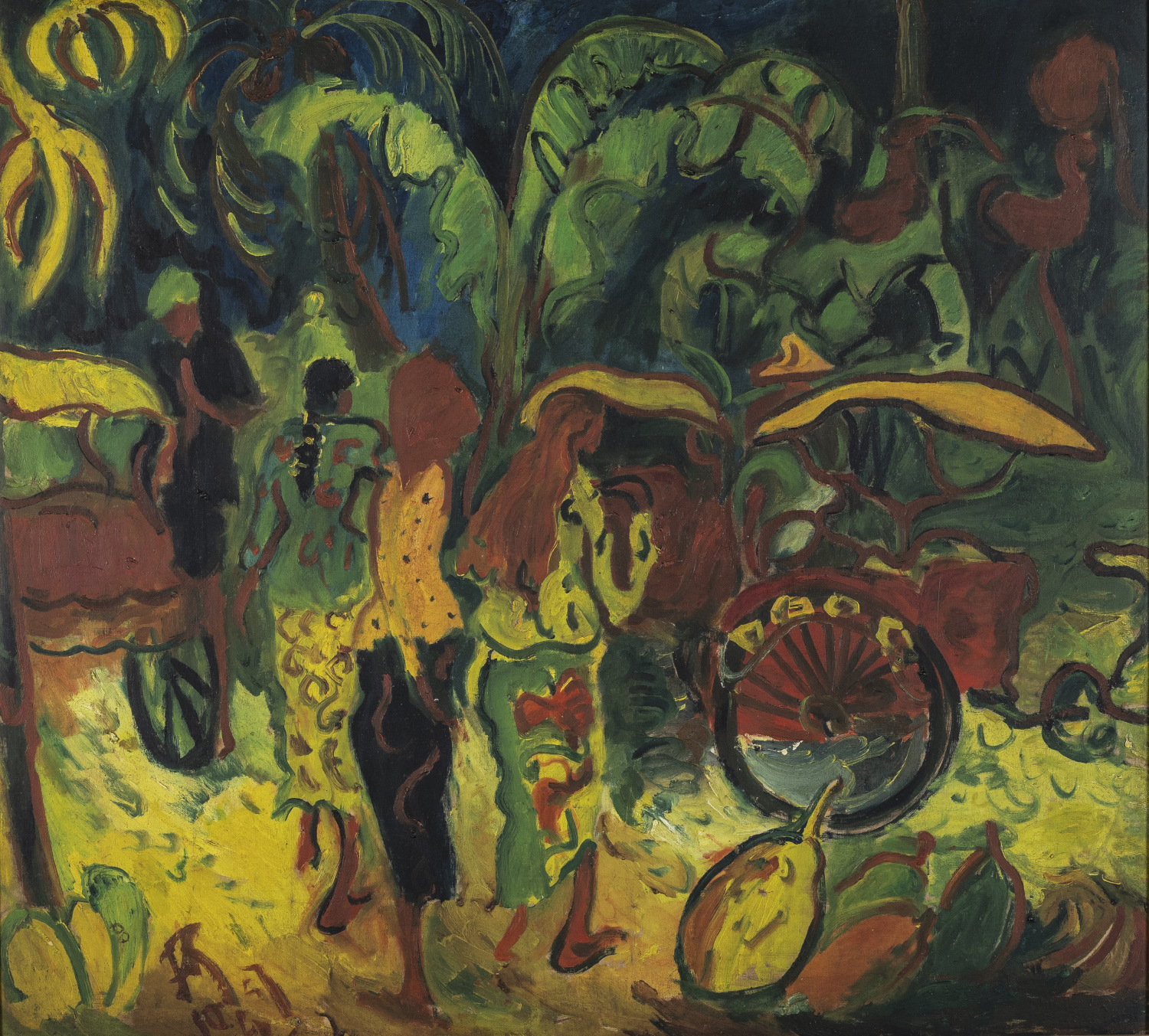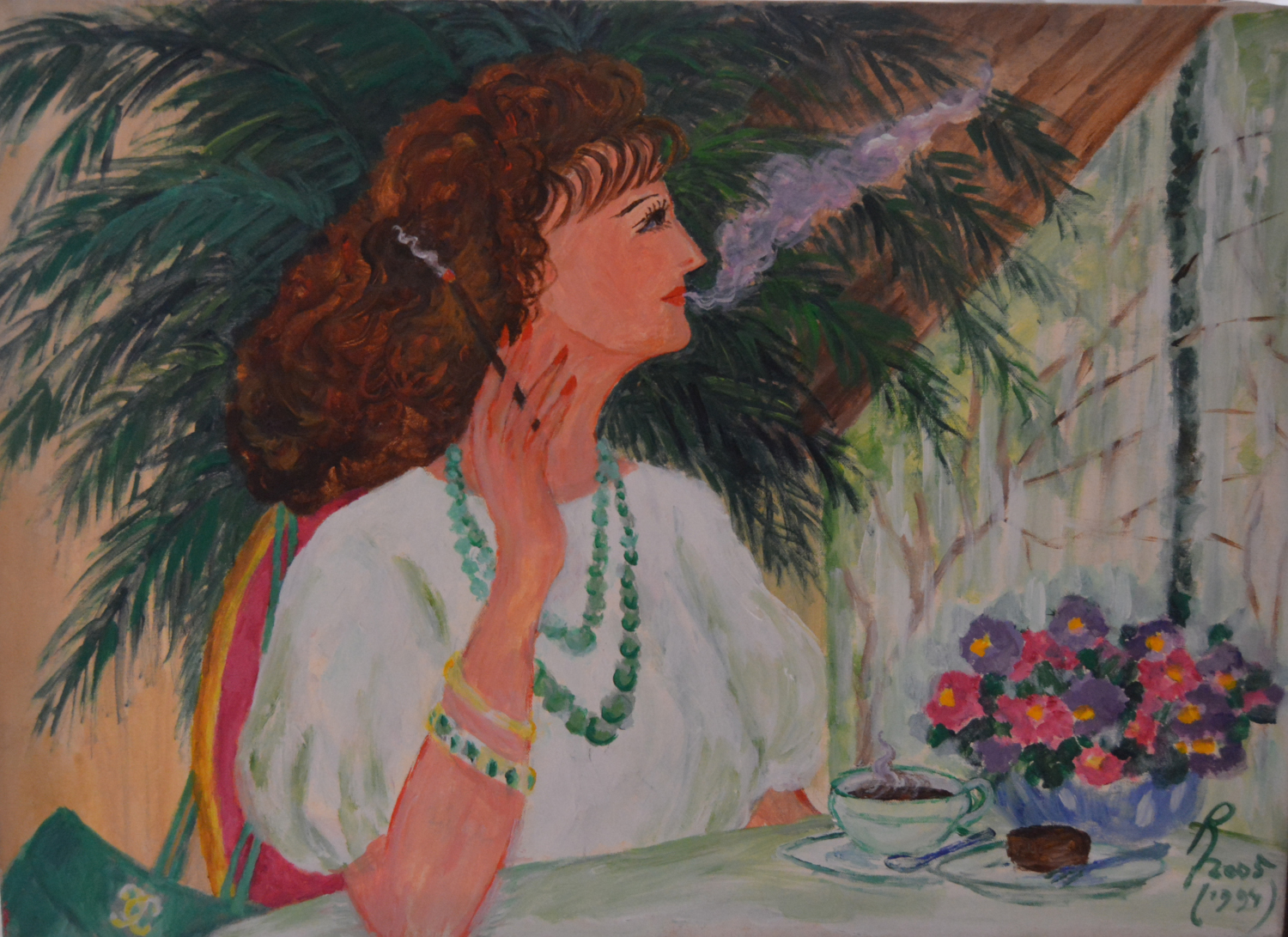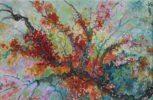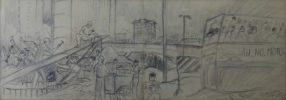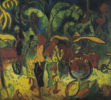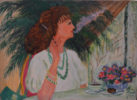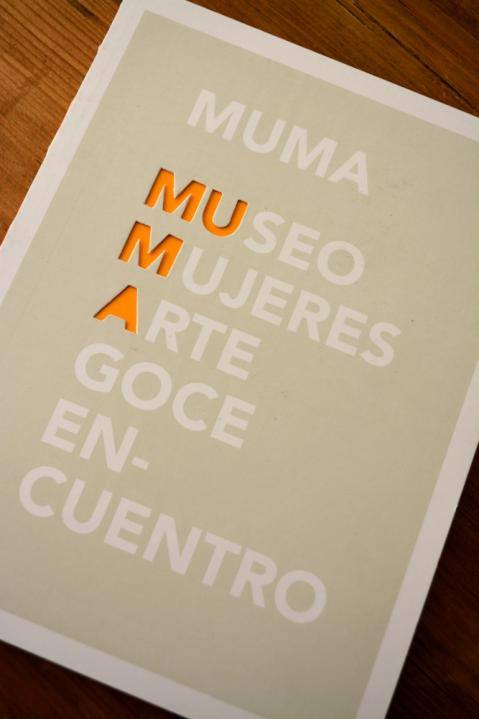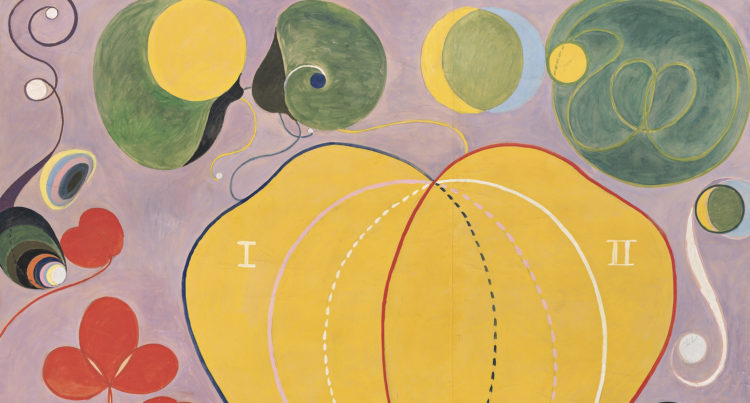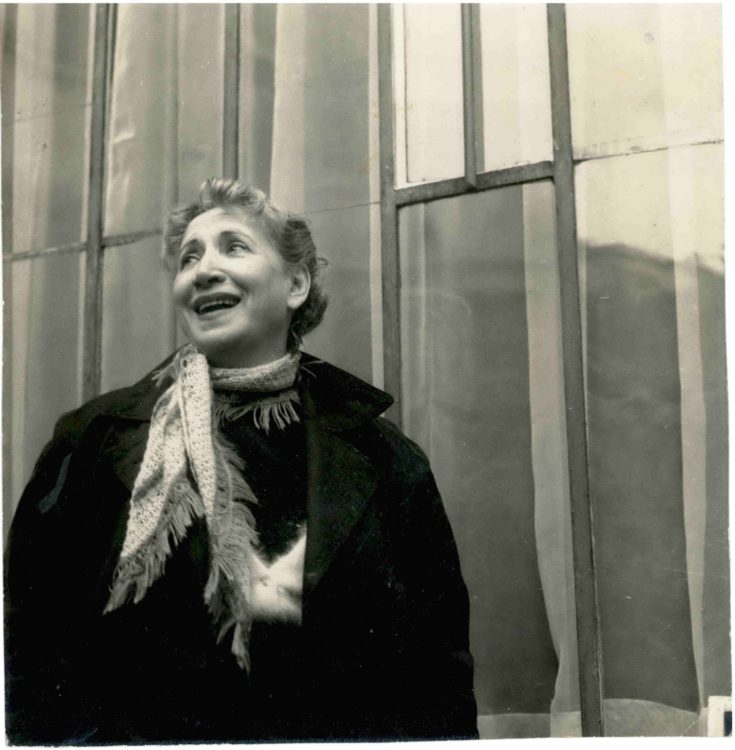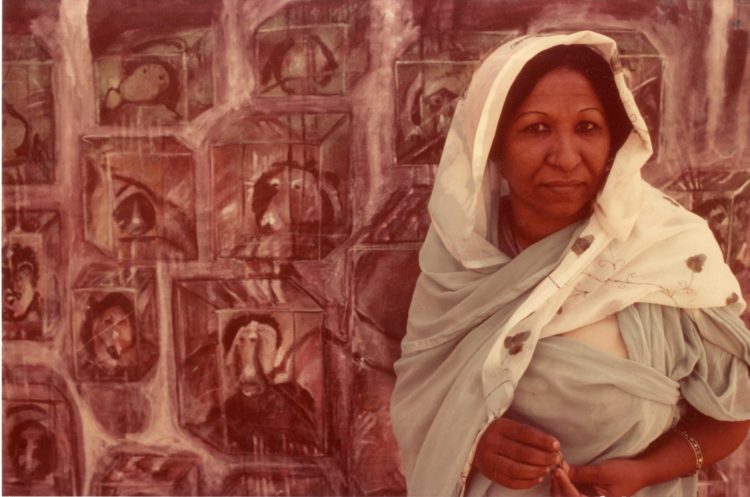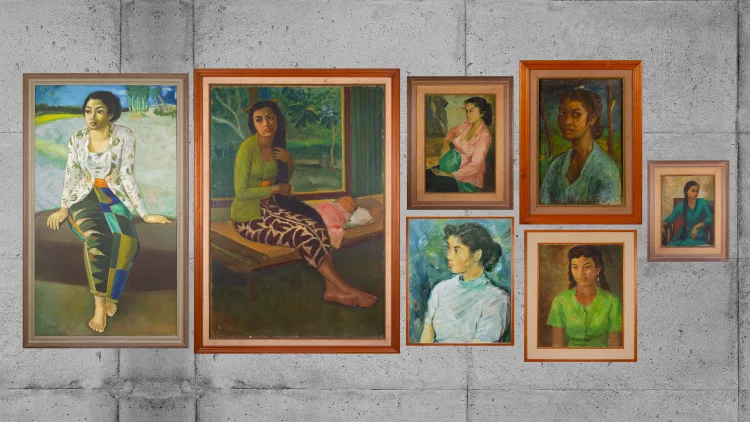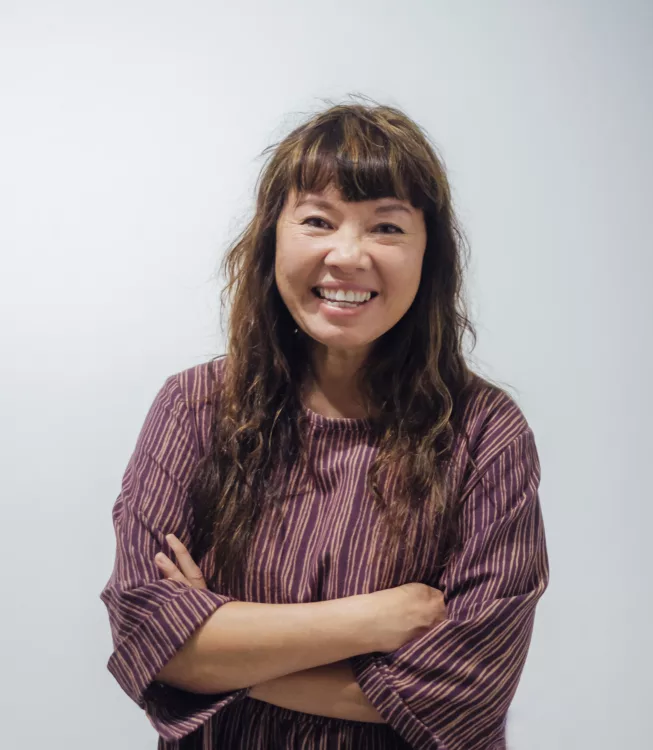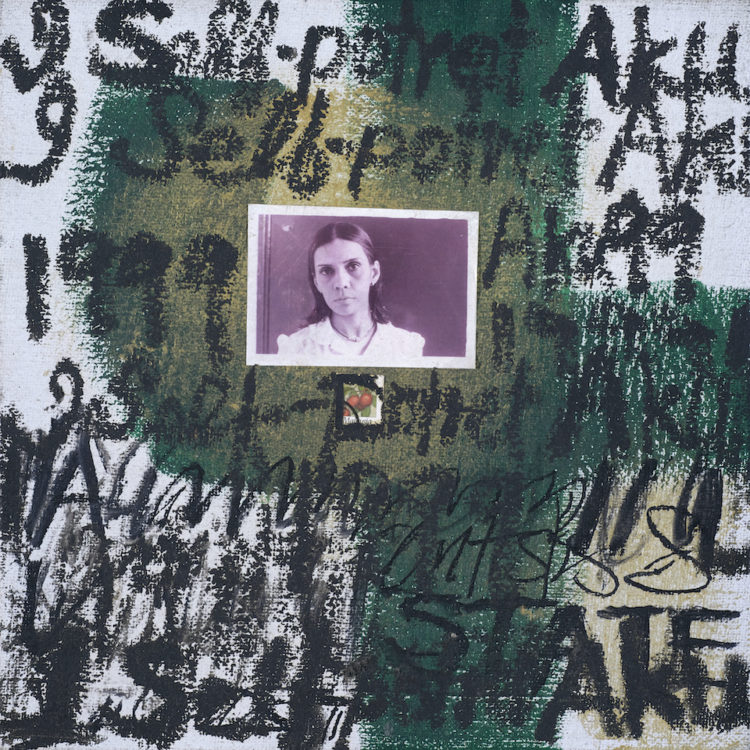Siti Ruliyati
Low, Yvonne, “Recovering Women’s Subjectivities: Siti Ruliyati and the ‘private’ transformations of Academic Realism”, in Ashton, Jenna (ed.), Feminism and Museums: Intervention, Disruption and Change Volume 2, Boston, MuseumsEtc, 2018, p. 210-245
Solo exhibition, Balai Budaya, Jakarta, 18–25 January, 1979
→Solo exhibition, Erasmus Huis, Jakarta, 29 October – 9 November, 1991
→Tracing memories, Sidharta Fine Arts, Jakarta, December, 2005
Indonesian Painter.
From an early age, Siti Ruliyati wanted to become an artist. Defying her parents’ wishes, S. Ruliyati enrolled herself at the newly established ASRI Yogyakarta [the Indonesian Visual Art Academy] in 1950, where she became one of ASRI’s pioneering female students. The school introduced her to the practice of sketching outdoors or en plein air, which became the foundation of her lifelong art making. From the 1950s until the 1970s, her subject matter revolved around everyday lives and scenery in the old city of Yogyakarta; the hustle and bustle of a traditional market, women working in rice fields and glimpses of life in a small village. Her early sketches of these subjects were featured in local cultural magazines published after the Proclamation of Indonesian Independence (1945), such as Zenith, Budaja and Indonesia.
After graduating from ASRI in 1957, she taught drawing at a teacher training school in Yogyakarta. One of her few surviving paintings from this period, entitled Kampung [Village, 1957], is held in the collection of the Museum of Fine Arts and Ceramics, Jakarta. This work portrays traditionally-clothed human figures amidst banana trees, rickshaws and displayed fruit, rendered with thick paint strokes. The use of dark colours evokes the nuanced atmosphere of the peak of dawn, capturing both the serenity and the bustling activity of the early morning hours.
In 1979, S. Ruliyati relocated to Jakarta where she established a home business creating handmade embroidery goods and hand-painted postcards, supporting her six children. Simultaneously, she offered painting classes aimed at women with diverse educational backgrounds such as lawyers, psychologists and engineers. From the 1980s into the 1990s, she organised annual group exhibitions with her students, entitled Ekspresi Warna [Colour Expression]. This period marked a significant shift in her choice of subject matter, as she turned to painting flowers and portraits of the middle to upper-class women she encountered, exemplified in vibrantly coloured paintings such as Perempuan sedang merokok [A Woman Smoking, 2005].
Amidst her busy routine, she took her sketchbook everywhere and captured the activities of construction workers around the city from inside a taxi – showing both her dedication to the practice and her unchanging allegiance to the common people [rakyat]. When her health deteriorated and she could no longer sketch outside, she continued painting using her older sketches as references.
From her student days onwards, S. Ruliyati actively participated in several exhibitions, notably the first recorded women painters’ group exhibition in Yogyakarta in 1956, which took place in Sanggar Seniman Indonesia Muda [Young Indonesian Artists’ Studio]. Additionally, her paintings were exhibited at the Sao Paulo Biennale II (1953) and in an Indonesian art exhibition at the Ernst Museum in Hungary (1962). To this day, her painting titled Boneka Jepang [Japanese Doll, 1965] is the only known work by a female artist held in the Soekarno Collection in the Presidential Palace, for which it was acquired in 1966.
A biography produced as part of the programme The Flow of History. Southeast Asian Women Artists, in collaboration with Asia Art Archive
© Archives of Women Artists, Research and Exhibitions, 2025


